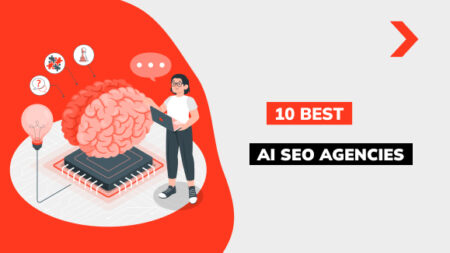SEO vs. PPC: Costs, Benefits, and Key Differences
All modern businesses are moving into the digital realm, and today, almost everyone — from small brands and startups to large global corporations — has their website. However, simply having a web resource is not enough to achieve success on the World Wide Web. Sooner or later, business owners will need to take steps to promote their sites on popular browsers.

It’s essential to leverage on-page SEO, various tools, digital marketing strategies, innovative trends, and other effective technologies in the online environment. This involves tools like search engine optimization (SEO) and (pay-per-click) PPC advertising. But which one should you choose to achieve your goals more quickly? Let’s explore the advantages and differences between PPC and SEO.
Understanding SEO and PPC
When choosing between PPC or SEO, it’s important to understand the prospects and characteristics of each technology. They operate in fundamentally different ways, so they differ significantly. The mechanism of operation determines the choice of marketing strategy. It’s also worth considering that you can always use both options: PPC advertising and search engine optimization. Although there are many debates on the Internet about the effectiveness of these options, it is better first to understand which one is better and why it can be considered the true winner.
What is SEO?
When discussing SEO versus PPC, it is essential to emphasize that the first one involves optimization processes aimed at improving the visibility of the website so that search algorithms can find it based on potential customers’ queries and offer users a link to the online platform displayed at the top of search results. From this perspective, the optimization is much better when comparing SEO versus PPC. However, it’s important to look deeper. Effective website optimization involves many innovative tools and techniques, such as keyword research, on-page SEO, local and technical SEO, off-page SEO, backlink audit, and more.
Process and Goals of SEO
Implementing modern and relevant search engine marketing is a long-term process that is gradual, step-by-step, and requires time to develop quality content marketing, adapt it to the main algorithms of online robots, and publish it on the website. At the same time, the result will be organic traffic, high search results, and other growth indicators that will come to the web resource for free (simply because the target audience will see the specific site in search results when looking for products or services).
- Keyword research
All SEO promotion processes begin with keyword research. This service involves creating lists of low-frequency, medium-frequency, and high-frequency keywords. Keyword research consists of collecting phrases, local expressions, mini-sentences, special word combinations, and phrases that will later be published on the brand’s website. These keywords help the site to index better, rank higher, increase conversion rates, and more.
- On-page SEO
Today, on-page SEO is indispensable because it involves optimization processes that help promote individual products or services on specific web pages. Competent on-page SEO enables website promotion by improving ranking, achieving excellent conversion rates and organic traffic, boosting ratings and positions in search results, and increasing online sales and, consequently, the company’s profits.
- Off-page SEO
Off-page SEO is another effective way to attract organic traffic and additional target audiences through backlink audits. It involves attracting users from other websites using backlinks. Off-page SEO is an essential part of website optimization and promotion because it helps engage additional clients from the internet in the online shopping process.
- Technical SEO
Conducting a site audit is crucial for ensuring its smooth and fast operation. Technical SEO involves identifying and resolving technical issues and deficiencies that negatively impact the website’s performance. A site audit can reveal inaccuracies, duplicate content, poor structure, and unnecessary keywords. This strategy ensures that the site meets the technical requirements of search engines, including crawling, indexing, rendering, and architecture, to improve organic ranking.
The Pros and Cons of SEO

The advantages of SEO can be listed endlessly — such as the potential to appear in the top results for key queries, gaining organic search traffic, utilizing straightforward promotion principles, and so on. However, it’s essential to highlight the main pros of SEO to understand its core value. These include:
- a relatively long-term perspective from a search engine marketing strategy;
- a lasting and powerful effect on a website and social media;
- increased loyalty and trust from online users;
- engagement in online purchases through quality content marketing;
- consistent positive search results, including traffic influx, among others;
- no need for a massive financial investment upfront;
- consistently measurable results, and so forth.
All these prospects make search engine marketing stand out among other digital technologies. However, like any methodology, it’s important to remember that there are also disadvantages to SEO. The main cons of SEO include:
- time frames (while waiting for SEO to take effect, the brand owner remains in uncertainty);
- financial investments (if a business owner decides to scale the company, it will require additional financial input);
- in SEO strategy, prohibited promotion techniques cannot be used (online bots may impose sanctions or shadow bans).
Therefore, when the priority is to achieve a long-term effect, organic search, increased online sales, and business scaling, long-term SEO is the only correct and innovative solution for maximizing revenue.
What is PPC?
A distinctive feature of search ads is that tactics, not strategies, are employed to achieve desired results in the shortest possible time. This refers to digital advertising tactics implemented through proper audience targeting settings for specific social media and the deployment of other advertising campaigns that can generate paid search ads. Most often, these ads are used when there is an immediate need to boost online sales or to test the viability of a business hypothesis regarding a specific service or product. If Google Ads is set up correctly, an evident influx of visitors from paid search can be achieved within a day.
Process and Goals of PPC
To achieve quick results in search ads, it’s important to set up Google Ads correctly. This usually involves working on relevant keywords competitors bidding, which brings online users already interested in a particular product or service to a specific site.

Proper PPC SEO setup will allow for noticeable results from launching advertising campaigns and Google Ads within the first day, which attracts most brand owners and modern marketers. Consequently, audience targeting is used today by giant corporations because they have the financial resources to invest in ads to get visitors from paid searches.
- Keyword research
PPC SEO involves keyword research, although it is implemented to drive traffic from search ads that are paid for. The service of keyword competitors bidding involves collecting specific quotes, phrases, sentences, individual words, and expressions to set up and launch advertising campaigns properly. The keyword collection process is similar to that used for SEO services. The difference is that the search intent involves incorporating high-frequency keywords into the project to achieve the desired results.
- Bid setting
The main search intent in launching paid ads is to set bids correctly to ensure a return on investment. Therefore, bid-setting strategies should always include additional commissions (for the product or service), conversion payment commissions (a fixed percentage of the product or service cost), optimized cost-per-click, manual bid setting (a fixed bid amount for each click on a specific ad), and percentage-based click cost (e.g., a bid for a click as a certain percentage of the total product or service price).
- Ad creation
Ads are always created from scratch. This is because every business is unique, with its growth and development prospects, priority goals, objectives, etc. Creating contextual ads requires additional budget expenditures as developing a video clip, ad, audio message, or even visual design involves efforts by experts to make the “perfect picture” for users to ensure they purchase the advertised product or service.
- Audience targeting
Launching targeted ads on popular platforms is another way to attract paid traffic, increase platform visits, and boost online sales. This method has become quite popular recently and is used not only by large corporations and big businesses but also by small and medium-sized businesses looking to reach their target audience quickly. This approach will be effective if targeting settings are performed correctly, accurately, and proficiently.
The Pros and Cons of PPC
When choosing to set up pay-per-click advertising, it is important to understand all the advantages of this model, which are quite numerous. The main pros of PPC include:
- instant launch and quick results;
- an excellent method for initial promotion;
- suitable for seasonal projects at specific times;
- includes many types of ads, providing ample room for creativity, experiments, and marketers’ imagination;
- an excellent tool for evaluating and testing new offers;
- suitable for testing the effectiveness of new features on a website;
- considered an affordable option for all devices, from desktop to portable.
However, it is important to remember some disadvantages of PPC, as they do exist, albeit few. Among the cons of PPC one can include the fact that setting up ad campaigns on your own is a challenging task that requires regular financial investment. It is also worthwhile because if the target audience or product/service positioning is not developed correctly, there is a chance of simply wasting money.
When to Use SEO
Everyone who dreams of and aims to create an Internet business capable of sustaining competition in the long term must pay attention to this promotion method. Whether you have a large or small budget, spending it solely on advertising campaigns would be a real mistake. The fact is that acquiring customers from a free traffic channel allows you to save a significant amount of money, which can be directed towards new online channels to attract additional target audiences. Competitors who have not succeeded in SEO will be forced to focus on acquiring paid traffic and cannot experiment with new marketing approaches.
Targeting Long-Term Growth
SEO is always oriented towards long-term growth, both literally and figuratively. The implementation of this modern method can yield long-lasting effects. As practice shows, this is always the case. Essentially, even if a client stops investing in their business project at some point, the already implemented SEO will continue to work for a very long time. Based on this, the website will continue to receive conversions, rankings, new online sales, and traffic.
Building Brand Authority
Utilizing up-to-date SEO is all about significantly enhancing business authority. The technology works in such a way that by implementing competent tools and incredibly high-quality, creative, useful, and well-crafted content, there is a chance to attract the target audience and let them understand that the company’s reputation is very high. Besides strengthening reputation and authority, it also helps the company gain substantial trust from online users.

Focusing on Organic Traffic
Traditional, professional, technical, and local SEO is focused on attracting traffic. This is not only about achieving a massive reach for the website but also about drawing online users to the web resource. Thanks to the growth of the web resource in Google and other systems, achieving higher rankings for the site also increases important conversion rates. The more traffic comes in, the more opportunities open up for modern businesses and the more chances to convert visitors into actual customers.
Targeting Informational Keywords
Launching targeted ads specifically on previously selected high-frequency or other various-frequency keywords is a great idea. This idea helps ordinary online users searching for specific products and services to immediately land on the business website that is being promoted. Launching targeting on informational, specially selected keywords tailored to the brand’s niche is an excellent prospect, leading the audience to quickly find what they are searching for through the search engine.
Limited Budget
Most often, SEO is used with a limited budget. The essence lies in the fact that the price lists for services have a set price that does not vary significantly. Clients typically focus on specific tasks and goals that need to be achieved, and based on that, they clearly understand the expenses that await them. Before implementing competent professional SEO, experts first study the brand’s niche, and then analyze which services will need to be implemented. After that, they create a budget based on the strategy and other essential factors. Therefore, the budget always has its limit, which implies payment for the services rendered.
When to Use PPC
PPC (Pay-Per-Click) advertising is considered an ideal tool for testing the demand for a product or service in new niches. This tool allows you to avoid waiting months for results; you can get them within a week or even a day. It’s best to use paid search only when you need immediate results, a predictable level of sales, or a targeted audience with precise characteristics. With its precise settings, any brand can quickly rise above the search configuration, as this technology is highly flexible.
Need Immediate Visibility and Conversions
Many marketers use this advertising model because of its speed and because it allows a website to immediately rise high in search queries, significantly increasing conversion rates. The web resource becomes highly visible online because it appears in the top positions or enters the top 10 in Google or other algorithms. A well-crafted, high-quality, and well-thought-out ad campaign always “shoots” to the top, delivering maximum results in a short period.
Targeting a Specific Audience
Modern PPC targets a specific audience type. Therefore, a brand must know which users to attract to its website. Only through analyzing the target audience and determining its type can target advertising be set up for specific consumers, drawing them to the business’s web resource. Through advertising, online users can decide whether to purchase services or products.
Running Time-Sensitive Campaigns
Competently configured PPC allows you to run special campaigns based on the duration of the period. This means brands can quickly launch advertising campaigns for short or long periods. In any case, time frames will be set, and time will be limited. For example, during this time, a business can promote one of its products or services, and any online user can order it within a specified period. Once the promotion stops, it means the time has expired.
Testing Marketing Strategies
Most marketers using paid search can conduct experiments. For example, several advertising campaigns can be launched simultaneously to see which performs better, attracts a larger target audience and traffic, and is more relevant and in demand among Internet users. Testing can be stopped at any moment. Consequently, when testing ends, funding also stops, meaning the client no longer pays for clicks, thus saving their budget (leaving only the campaign that generates revenue and pays off the click advertising).
Promoting New Products or Offers
With well-thought-out PPC, you can promote completely new offers or newly developed products. Naturally, if you work on the textual content and incorporate attractive visual content, you will attract many new customers. It is much easier to engage them through PPC because, first, they will see it quickly, and second, they will immediately learn about the main advantages and privileges of the new product or offer and decide if it is worth ordering, etc.
Combining SEO and PPC for Maximum Impact
It is important to remember that you do not always have to choose between search engine optimization (SEO) and pay-per-click (PPC) advertising. Together, these two methods can create what is known as the “double effect.” Statistics show that organic search results alone do not maximize traffic, but with (PPC) advertising, there is a chance to reach the maximum audience. In practice, this works quite simply.
Online users are much more likely to notice bright ads, but having a brand in the top search results on Google or other crawling algorithms also plays an important role. Additionally, comprehensive SEO development for website optimization and advertising campaigns often yields excellent results, with the brand’s website appearing organically and as an advertisement at the top of search results. Promoting web resources and (PPC) advertising together is much more effective than using them separately. Therefore, if a business has the financial capability, it is better to utilize both methods together.
SEO vs. PPC: Which is better?
SEO and PPC are effective in their ways, as evidenced by many modern brands that have successfully employed these methods. The differences between these approaches are fundamental:
- PPC has an immediate effect but only works as long as funds are in the account. SEO starts slowly and gradually but does not require additional financial investments in the future.
- Both PPC and SEO attract additional audiences but work based on different methods. PPC has an aggressive nature, while SEO is more natural.
- Both methods perform well in optimization, but PPC can be integrated into all devices, which is convenient for users who use computers, laptops, tablets, smartphones, phones, and other gadgets.
- SEO is well-suited for brands offering the same products or services regardless of the season, while PPC is more suitable for seasonal products and services.
In terms of setup, SEO is somewhat easier to learn and configure than PPC, as the latter can result in losses if not configured correctly.
Comparing Costs of SEO and PPC
Though ads drive faster results but may have higher fees, SEO is a cheaper way in the long run because it focuses on organic search and doesn’t require payment for a click; it can lead to greater prices for instant results. In fact, beyond the initial costs of content and so on, organic results of the website are free to the firm.
SEO: A Long-Term Investment
It doesn’t give traffic, leads, or sales immediately. For most firms, SEO takes 3 to 6 months to deliver results — it’s why the strategy requires long-term management. You must begin optimizing the website, even if you don’t notice instant numbers.
– Initial Costs
Setting a reasonable budget that aligns with the firm’s goals and projected ROI grants a wise investment. Open-minded communication with an SEO provider about restrictions allows you to devise cost-effective methods that produce measurable results and remain within the budget.
– Ongoing Costs
On average, SEO services range from $1500 to $5000 per month or $5000 to $20,000 per project. SEO fees can vary based on the chosen pricing model, the reputation of the SEO service you’ve accessed, and other numerous considerations.
PPC: Immediate Results, Ongoing Costs
On the other hand, the fees of paid search results can’t be wrapped up into a shipshape bundle that covers all scenarios. However, firms often spend $5,000 to $8,000 monthly, which entails ad spend and management.
– Immediate Costs
Ad management fees can range from $1,500 to $10,000 for a flat-fee model or 10%-20% of the budget for a percentage of ad spend. Costs are based on how many ad campaigns you operate, who you compete against, and who manages ads.
– Ongoing Costs
Most pay $0.11 to $0.50 per click and $0.51 to $1.00 per 1000 impressions on Google Ads. Hence, ad budgets vary substantially; on average, medium-sized brands pay from $15,000 to $20,000 monthly on ads, with an average CPC of $2.59.
Which is Right for You?
If immediate visibility and quick results are critical, paid search is the right option. So, if you’re ready to invest in a long-term approach to fuel consistent traffic, organic search is the channel to target. But both methods can improve a brand’s visibility in the long run when initiated together.

FAQ
Is SEO or PPC more expensive?
PPC will be much more expensive if you regularly set up and launch targeted advertising. SEO will be slightly cheaper and can often be implemented within a limited budget. In any case, both methods lead to increased online sales.
Is SEO or paid ads better?
It largely depends on the specific goals and tasks of the business. If you need to quickly showcase your strengths and sell products online, PPC is the way to go. If you want to earn more in the future and achieve long-term effects and consistent sales, then professional SEO is more suitable.
Why would you prefer PPC over SEO?
Most brands choose PPC because their products are sold in specific seasons. This benefits them because promoting seasonal products is best done through PPC, as has been proven in practice. Competent SEO, on the other hand, is suitable for general promotion and optimization of products and services on the internet. Still, it will have long-term effects and continue to bring profit to the brand long after the ad campaign has ended.
Which is harder, SEO or PPC?
When setting up PPC, it is important to consider that the technology is complex. It is more difficult than SEO. If PPC is set up incorrectly, incompetently, or inaccurately, it can attract the wrong target audience, causing the brand to lose money and miss the opportunity to sell products to the intended audience at the right time. With SEO optimization, problems do not arise, as the strategy can always be adjusted and corrected.
Does SEO have a high ROI?
SEO has a very high return on investment. While working on a business project, you can notice the gradual growth and prosperity of the brand on the internet. Once the business website achieves the best results, it will gain conversions, rankings, and excellent indexing. It will be able to engage a paying audience in online shopping for goods or services.
Do PPC and SEO work together?
Naturally, both technologies can be combined. The only important consideration is the need for a certain amount of financial resources. With a budget, it is possible to combine these two methods, as both require capital investments and ongoing funding. Investments pay off, but at different rates and depending on the technology chosen by the brand owner.
Is SEO cheaper than Google Ads?
SEO will be cheaper than launching ad campaigns on Google. The fact is that Google is a large, globally known corporation that enjoys immense popularity. For this reason, setting up and launching ads on this search engine will be quite expensive for all types of businesses. In any case, advertising will cost more than using SEO promotion.





